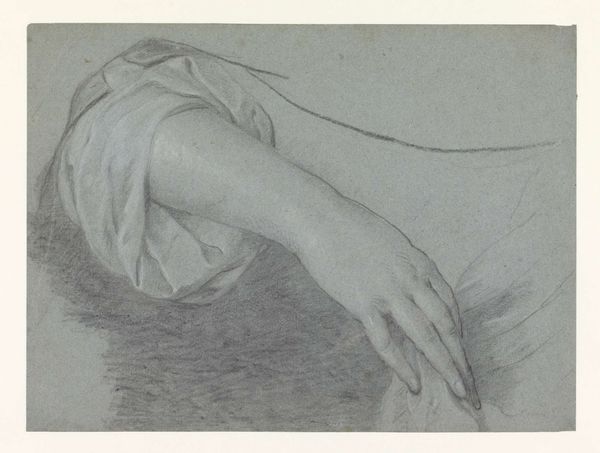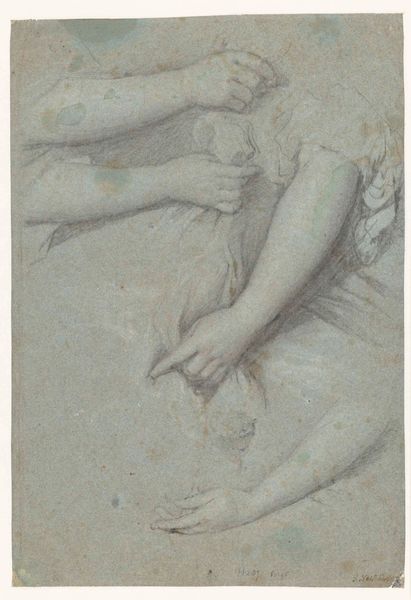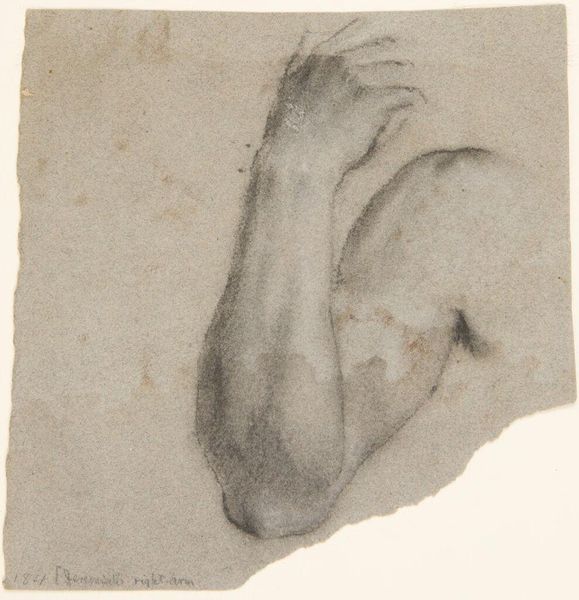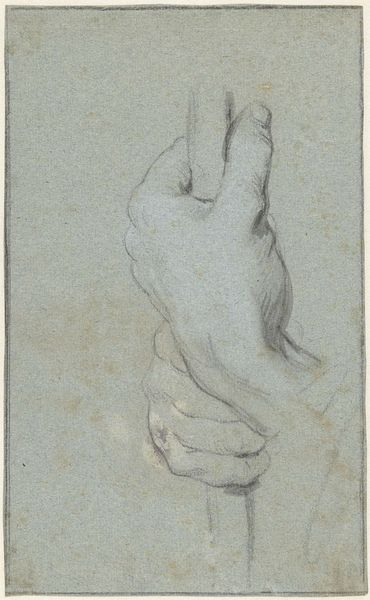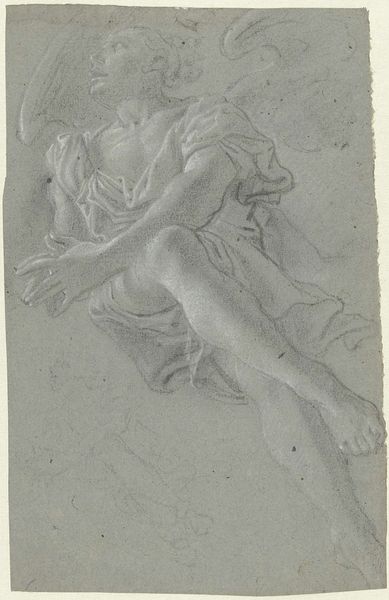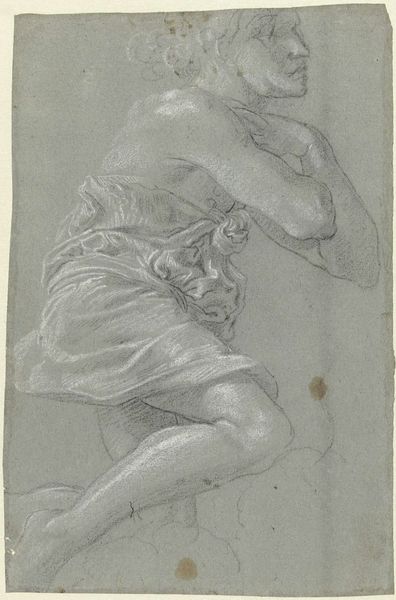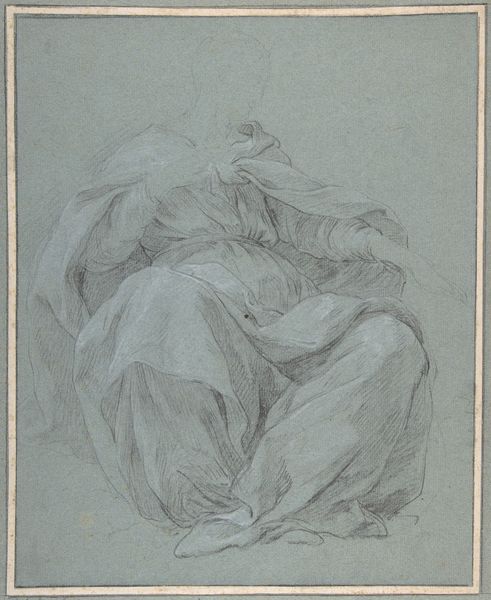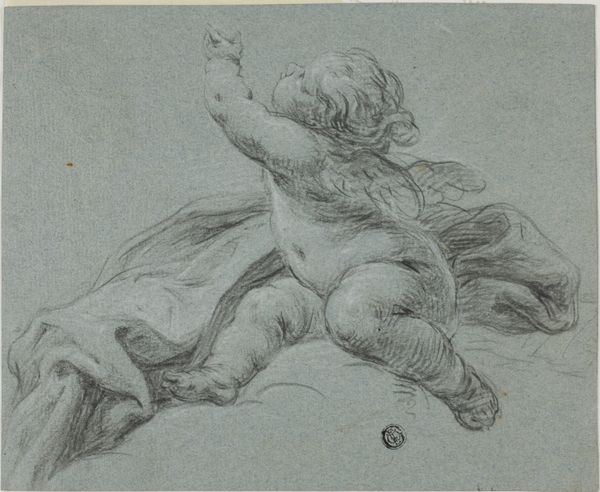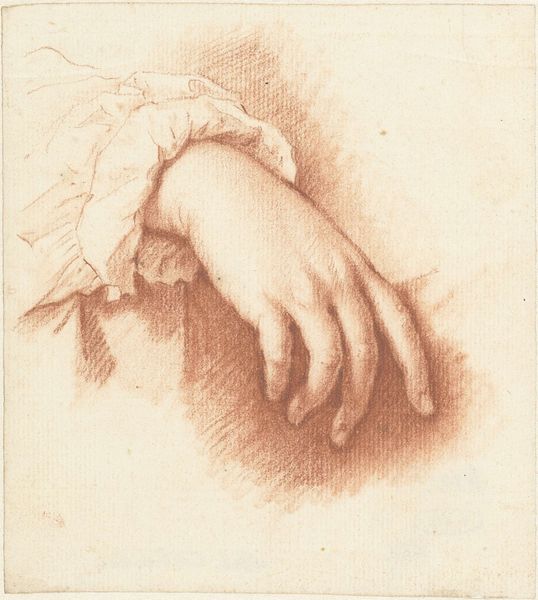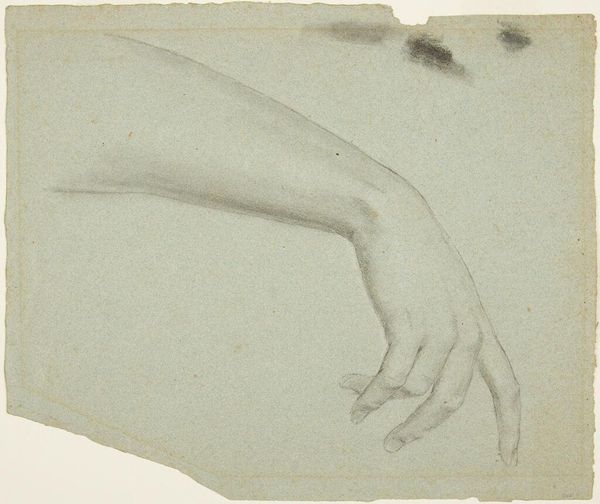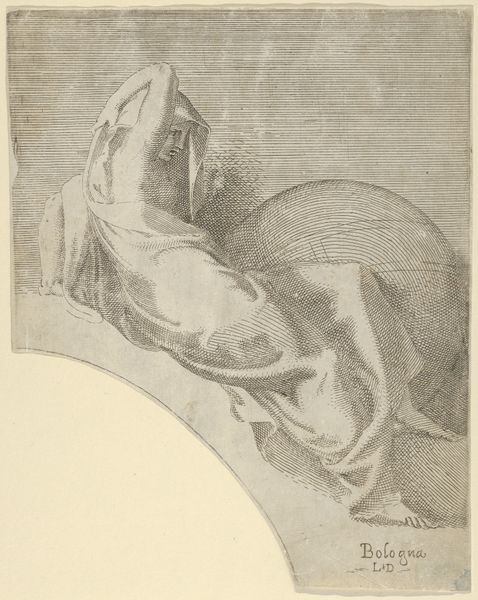
drawing, pencil
#
portrait
#
pencil drawn
#
drawing
#
baroque
#
charcoal drawing
#
figuration
#
form
#
pencil drawing
#
pencil
#
genre-painting
#
arm
Dimensions: height 242 mm, width 224 mm
Copyright: Rijks Museum: Open Domain
Editor: This is "Studies of two Arms" by Caspar Netscher, made around 1675. It's a delicate pencil drawing at the Rijksmuseum. The arms seem to float on the page; there’s almost no context given. What strikes me is their stillness, like a posed study, and how softly they're rendered. What do you see in this piece, from a historical perspective? Curator: What interests me is the institutional context in which these studies would have been created and later displayed. Think about the rise of academies in the 17th century. Figure drawing, especially studies of the body and its parts, became crucial for academic training. How might this drawing function within the hierarchy of genres being taught? Editor: So it's more than just an observational sketch; it's tied to art education itself? It looks like the artist's exploring the shape of the arms, but what you’re saying suggests this also reflects larger trends of teaching methodologies. Curator: Precisely. Drawings like this one show us what was valued in art education. But even beyond the studio, consider the art market. Was this created for practical reasons only or could studies like this have been seen as works of art to be collected? Who owned such drawings, and how were they displayed? These questions provide great insights into art collecting back then. Editor: It’s fascinating to think about it as a collectible piece, and not just something preparatory! I hadn't considered that possibility. Curator: Art production, ownership, and collecting practices are intrinsically intertwined and mutually influence one another. Considering the socio-political status that this image may grant can open many other possible meanings, especially when displayed publicly. Editor: Thanks; I definitely learned to look at drawings like this one with new perspectives! Curator: The interplay of function and market changes the very definition of "art." Food for thought!
Comments
No comments
Be the first to comment and join the conversation on the ultimate creative platform.
